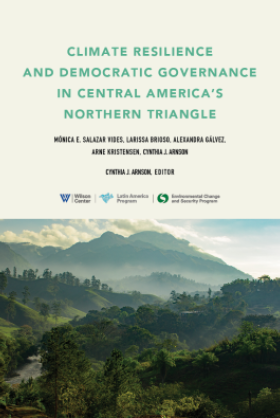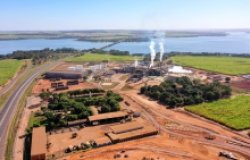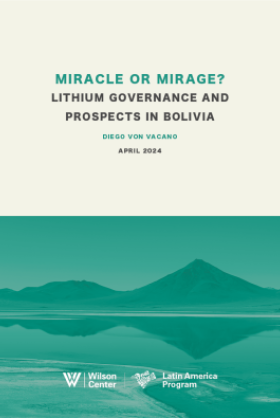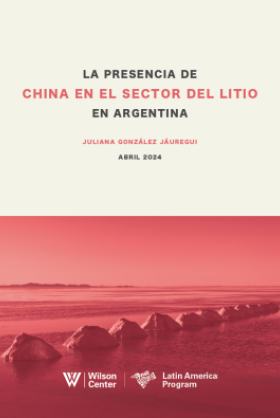Deep Dive: IPCC Special Report on the Ocean and Cryosphere in a Changing Climate
The United Nations’ Intergovernmental Panel on Climate Change is the leading global body on climate science. On September 25, it will release its first-ever Special Report on the Ocean and Cryosphere in a Changing Climate. More than 100 scientists from 80 countries assessed the latest scientific knowledge about how climate change is impacting the ocean, coastal, polar, and mountain ecosystems, and the communities that depend on them. Join us to hear Ko Barrett, Vice Chair of the IPCC, present the key findings of the report. Following her remarks, speakers will explore the future of sea-level rise and its cascading impacts, and how the international policy community can meaningfully respond to the Special Report.
Overview
The world’s ocean and cryosphere have been absorbing the heat from climate change for decades, said Intergovernmental Panel on Climate Change (IPCC) Vice Chair Ko Barrett at a recent Wilson Center event on the IPCC’s Special Report on Oceans and Cryosphere. “The consequences for nature and humanity are sweeping and severe,” she said.
The report was the first of its kind to take an in-depth look at “the furthest corners of the earth,” including the cryosphere, or frozen parts of the globe. Even in these regions, Barrett said, human-caused climate change is evident, which is concerning since the oceans and cryosphere are critical for all life on earth. It is clear, she said, that if greenhouse gas emissions continue to increase, global warming will drastically alter life on earth.
In addition to documenting the melting of high mountain glaciers and polar ice sheets, which “contain the freshwater for our future,” the report also reveals the benefits of ambitious and effective adaptation for sustainable development and the potential for escalating costs associated with delayed action. Barrett drove home the point that although the oceans and cryosphere may seem remote, they hugely impact all of us. For decades the ocean has been acting like a sponge, absorbing carbon dioxide and heat to regulate the global temperature, she said. But the report also shows that these systems can’t keep up.
New Source of Sea Level Rise
One new finding from the report relates to the source of most sea level rise: From 1900 to 2000, global sea level rose by around 15 cm, mostly due to the expansion of ocean water as it warmed, said lead author, Robert DeConto. But that’s changed, according to DeConto, with sea level rise now mostly caused by the melting of land-based ice.
Greenland, for instance, “is melting from the top down.” As the ice at the surface melts due to warmer air temperatures, it gets darker, which leads to a positive feedback loop characterized by further warming and melting. This is concerning because, as DeConto pointed out, more than 7 meters (~23 feet) of sea level rise are “locked up in the Greenland ice sheet.” Antarctica is beginning to wake up, he said, and it is “a sleeping giant” with roughly eight times more potential for sea level rise than Greenland.
To communicate the critical importance of action, DeConto highlighted a series of graphs projecting potential sea level rise from present through the year 2300. In each of these graphs a blue line (RCP2.6) represents the projection of warming if emissions are aggressively reduced, and a red line (RCP8.5) represents the projection of warming if emissions continue to grow. There is a big difference between what these two worlds look like, and the space between the blue and red lines is where policy could make a difference.
Action Needed Now
In either scenario, Michael Oppenheimer, IPCC coordinating lead author, pointed out that humanity will experience significant impacts, but the difference between a low emissions scenario and a high one is the difference between a changed world to which we can learn to adapt and one in which we are constantly scrambling to keep up with escalating change. Beyond 2050 these two paths diverge based on decisions that we will make over the next few years. In this case, inaction is a highly consequential decision.
Combining oceans and cryosphere in the same report helped Ko Barrett realize that they had happened upon a story line that was incredibly compelling about the flow of water from the very tops of the highest mountains and polar regions to the bottom of the ocean, and all the communities that depended on that. Looking at both oceans and the cryosphere allowed for a narrative to emerge that linked two seemingly disparate ecosystems, she said, giving real relevance to water as “the life blood of this planet.”
Mark Eakin, a contributing report author and Coordinator of the National Oceanic and Atmospheric Administration’s Coral Reef Watch, was struck by the way the concept of heatwaves had moved from land—where they are traditionally seen—to the ocean, which has seen heatwaves travel through its waters in the past few years. The concept of heatwaves in the ocean was just something that wasn’t there in previous years, said Eakin. Now, it is a recognized phenomenon.
A Solvable Problem
Norway’s Ambassador to the United States, Kåre Aas, offered an international perspective. The report shows that there is obvious reason for serious concern, he said. “We should spend our time and resources finding solutions,” he said, “not wasting time debating the cause of climate change.” With one of the largest economies and with incredible advances in innovation, he said, the United States will likely play a significant role in driving the world toward lower emissions.
Norway has set ambitious national targets for emissions reductions and seeks to be a low emission society by 2050, reducing emissions by 90 to 95 percent. We must continue to emphasize that this problem can be solved, said Ambassador Aas. “We can limit dangerous climate,” he said, “by reducing global emissions.”
In a Q&A session, Wilson Center Senior Fellow Sherri Goodman asked Ambassador Aas how the international community might best “climate-proof” governance institutions in this new era. Countries cannot tackle this issue alone, he said, and policymakers must be informed of consequential research, such as peer-reviewed reports by IPCC scientists.
The most important takeaway of the report is that we are currently in a pivotal period in which the choices that we make really will matter on a geologic time scale. “The report highlights the urgency of timely, ambitious, coordinated and enduring action,” said Barrett. “And what’s at stake is the health of ecosystems, wildlife and importantly, the world we leave our children.”
Written by Marisol Maddox, edited by Sandra Yin
Continue the conversation on Twitter by following @NewSecurityBeat and @PolarInstitute using the hashtag #SROCC and find related coverage on our blog at NewSecurityBeat.org.
Hosted By

Polar Institute
Since its inception in 2017, the Polar Institute has become a premier forum for discussion and policy analysis of Arctic and Antarctic issues, and is known in Washington, DC and elsewhere as the Arctic Public Square. The Institute holistically studies the central policy issues facing these regions—with an emphasis on Arctic governance, climate change, economic development, scientific research, security, and Indigenous communities—and communicates trusted analysis to policymakers and other stakeholders. Read more

Environmental Change and Security Program
The Environmental Change and Security Program (ECSP) explores the connections between environmental change, health, and population dynamics and their links to conflict, human insecurity, and foreign policy. Read more

Global Risk and Resilience Program
The Global Risk and Resilience Program (GRRP) seeks to support the development of inclusive, resilient networks in local communities facing global change. By providing a platform for sharing lessons, mapping knowledge, and linking people and ideas, GRRP and its affiliated programs empower policymakers, practitioners, and community members to participate in the global dialogue on sustainability and resilience. Empowered communities are better able to develop flexible, diverse, and equitable networks of resilience that can improve their health, preserve their natural resources, and build peace between people in a changing world. Read more
Thank you for your interest in this event. Please send any feedback or questions to our Events staff.








